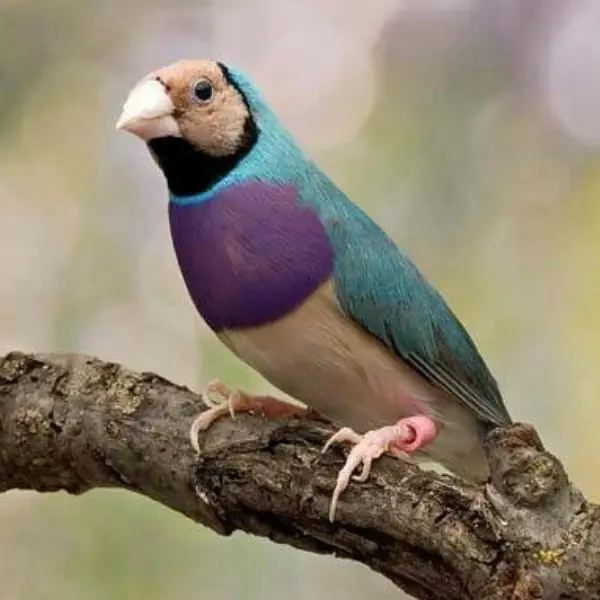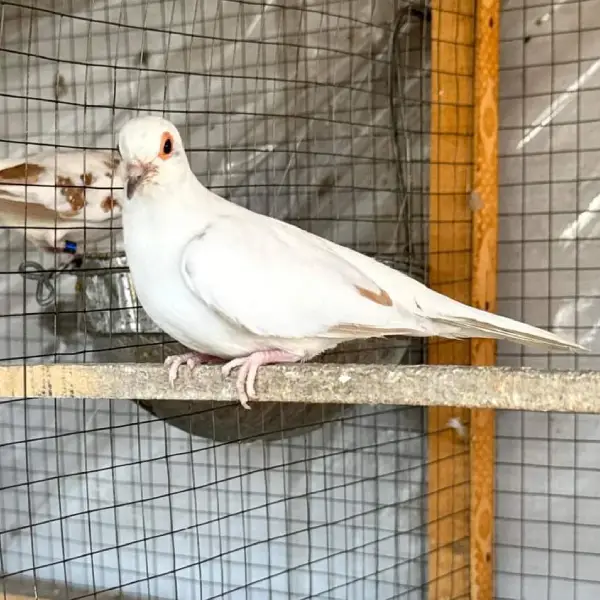Free shipping order over 20,000
Zebra Finch
₨ 5,000 Original price was: ₨ 5,000.₨ 1,500Current price is: ₨ 1,500.
-
-
-
- Scientific Name: Taeniopygia guttata
- Size: Approximately 10-11 cm (4-4.3 inches) in length.
- Color:
- Males: Males are more vividly colored, with a gray head and back, white underparts, and a black “tear drop” stripe running down from the eye. The beak is bright orange-red. They also have orange cheek patches, a black-and-white barred chest, and orange flanks with white spots.
- Females: Females are more muted in color, primarily gray with no orange cheek patches or barring on the chest. Their beaks are usually a paler orange.
- Beak: Short, conical, and bright orange-red in males, slightly lighter in females.
- Eyes: Dark, set against the contrasting gray or white face.
- Legs and Feet: Orange, matching the beak color.
-
-
SKU: REF. LA-5766-9-1-1-1-1-1-1-1-1-1-1-1-1-1-1-1-1-1-1
Categories: FINCHES, Uncategorized
Tag: finches
Share
Share on facebook
Share on email
Important Keys:
Habitat
- Distribution: Native to Australia, Zebra Finches are widespread across the continent, particularly in arid and semi-arid regions. They have also been introduced to various Pacific islands and other parts of the world.
- Environment: Prefers open grasslands, savannas, and lightly wooded areas. They are often found near water sources, where they can find seeds and nesting materials.
Diet
- Primary Food: Seeds, especially those from grasses, are the main component of their diet.
- Supplementary Food: During the breeding season, they also consume small insects and other invertebrates to provide additional protein for their chicks.
- Feeding Behavior: Zebra Finches forage on the ground or in low vegetation, picking up seeds and small insects.
Breeding
- Breeding Season: Zebra Finches can breed year-round, particularly when conditions are favorable, such as after rainfall.
- Nest Location: Nests are built in shrubs, trees, or even man-made structures. They construct their nests using grasses, feathers, and other plant materials, forming a small, round structure.
- Egg Quantity: Clutches typically consist of 4-6 eggs.
- Incubation Period: About 12-14 days.
- Fledging: Chicks fledge approximately 17-21 days after hatching.
Lifespan
- In the Wild: Typically around 3-5 years.
- In Captivity: Can live up to 5-7 years or more with proper care.
Behavior
- Social Structure: Zebra Finches are highly social birds, often seen in large flocks. They are known for their lively and active nature, constantly communicating with one another through song and calls.
- Vocalization: Their song is a series of short, repetitive chirps and trills, used in communication and courtship.
![]()
Be the first to review “Zebra Finch” Cancel reply
Related Products
-
-14%
Green Star Finch
₨ 17,500Original price was: ₨ 17,500.₨ 15,000Current price is: ₨ 15,000. -
-43%
Blue Gouldian Finch
₨ 35,000Original price was: ₨ 35,000.₨ 20,000Current price is: ₨ 20,000. -
-25%
Common Cut-throat
₨ 24,000Original price was: ₨ 24,000.₨ 18,000Current price is: ₨ 18,000. -
-20%
-
-20%
White-tailed Dove
₨ 1,250Original price was: ₨ 1,250.₨ 1,000Current price is: ₨ 1,000. -
-40%
Red Pied Dove
₨ 10,000Original price was: ₨ 10,000.₨ 6,000Current price is: ₨ 6,000. -
-20%
Diamond Pied Dove
₨ 6,250Original price was: ₨ 6,250.₨ 5,000Current price is: ₨ 5,000.
Sign Up for Exclusive Birds Care Tips and Offers from Phool Panchi
Company links
Category
Contact
© 2024 Phool Panchi | Developed By v3Studio














Reviews
There are no reviews yet.